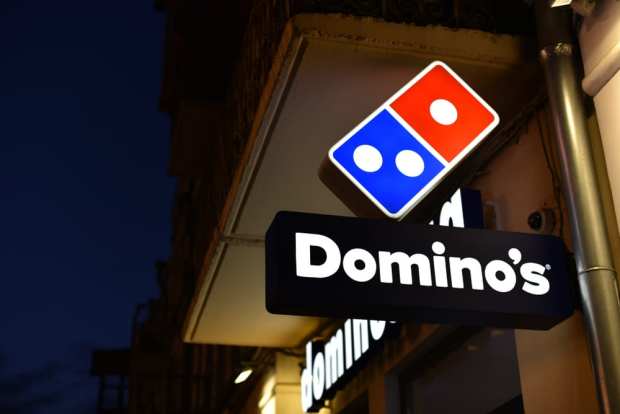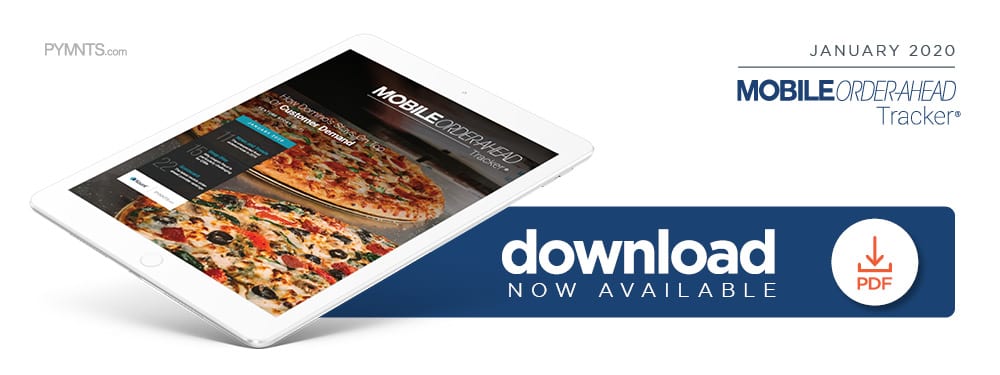Domino’s Mobile Order-Ahead 2.0: How Voice, 5G Can Deliver

Domino’s was one of the first innovators on the digital ordering scene, debuting order trackers and store locators with consumers in 2007. Over a decade in, Domino’s is reinventing its mobile ordering to keep up with its customers’ shifting preferences. In this month’s Mobile Order-Ahead Tracker, Christopher Thomas-Moore, Domino’s VP of global eCommerce and digital marketing, explains how the chain plans to use voice ordering and 5G to innovate mobile ordering.
 Mobile order-ahead has become ubiquitous for quick-service restaurants (QSRs). Nearly every chain now has an app presence, so it’s easy to forget that the technology was rare just 10 years ago.
Mobile order-ahead has become ubiquitous for quick-service restaurants (QSRs). Nearly every chain now has an app presence, so it’s easy to forget that the technology was rare just 10 years ago.
Domino’s was one of the first chains to innovate the space, developing an online tracker that reported order statuses to customers in real time and offered artificial intelligence (AI)-driven voice ordering. Former CEO Patrick Doyle even famously claimed that Domino’s was a technology company that happened to sell pizzas rather than a pizza chain.
This emphasis on mobile order-ahead didn’t come out of left field, according to Domino’s VP of Global eCommerce and Digital Marketing Christopher Thomas-Moore. The focus sprouted from a dedicated effort to find out what customers want and to then address their needs. In a recent interview with PYMNTS, Thomas-Moore explained how anticipating and responding to customer demands has driven the company’s mobile ordering initiatives since its onset, as well as how the chain continues to learn from customers and competitors as it forges ahead in the digital ordering space.
Leading the Mobile Ordering Charge
Domino’s took its first digital ordering step by introducing a delivery feature on its website in 2007. The chain quickly expanded to the Android and iPhone mobile platforms and has continued extending its services to other devices. Customers can now order Domino’s via Amazon’s Alexa, Google Home, smartwatches and a host of other products and services. Even social networks like Twitter now feature Domino’s ordering capability — hungry users can simply tweet the pizza emoji to repeat saved or recent orders and pay with saved transaction information.
“That’s the one I actually hear about most when I’m traveling and talking to people about what I do,” Thomas-Moore noted.
Domino’s was one of the first players in voice-activated mobile ordering, too. Its AI-enabled chatbot, Dom, launched as a voice-activated app in 2014, allowing customers to place orders just as they would with a live operator. The bot has since driven more than half a million orders, according to Thomas-Moore, and its popularity continues to increase.
“The adoption rates [of] voice search and other voice components have grown at a trajectory that has surpassed the adoption rates of mobile and tablet,” he explained. “Having that kind of integrated natural language conversation made people who were less comfortable with having a digital relationship a little bit more comfortable, because they have that ability to talk.”
Customer feedback was (and is) key to determining Domino’s areas for expansion. Each new ordering feature is subject to a rigorous customer testing phase to evaluate its efficacy in the chain’s ordering ecosystem.
“How the customers are actually responding is critical to our development plan,” said Thomas-Moore. “We test everything here — from the smallest change in a background color to new development and new features — to understand the true lift and impact on the business. That lift comes by the vote of our customers and their reactions when they’re in our eCommerce environment.”
Digital ordering now accounts for approximately two-thirds of the company’s revenue, showcasing how quickly mobile order-ahead has come to dominate the industry. Its per-store revenue has grown from $600,000 per year in 2007, when it first launched digital ordering, to approximately $1.2 million in 2019.
How Domino’s and Its Competitors Learn from One Another
Entering the market early meant there were precious few examples to emulate when Domino’s started offering digital ordering. The current popularity of mobile order-ahead means there are now plenty of competitors and customers from which to learn, though the line separating the two is often blurred.
“There’s definitely a trickle-down behavior, where our customer’s expectations are set by brands that they interact with on a day-to-day basis,” Thomas-Moore explained. “Then that expectation is set for every other relationship they have with every other company — not just within the restaurant category, but within retail, travel and a lot of other different categories.”
Other chains have learned from Domino’s — it was the first to introduce a real-time order tracker, according to Thomas-Moore, and such systems are now commonplace among QSRs. Pizza Hut and Papa John’s followed in the chain’s footsteps when developing their mobile ordering apps, and the technology has since branched to other cuisines.
The Future of Mobile Ordering
Domino’s plans to leverage digital opportunities with largely the same mindset that has worked since 2007. Mobile ordering shows no signs of slowing down for the brand or any of its competitors, but technological innovations are set to change the field.
“One of the areas that I’m really intrigued about is the adoption of 5G,” Thomas-Moore said. “When you have access to so much data at such a faster pace than we have now, what’s the new benchmark the customer’s going to set? What else can we do as a brand — that we have not done in the past — because of this added bandwidth?”
Domino’s and other QSRs have the opportunity to shape how new technologies are incorporated into the mobile order-ahead space. They will need to keep careful tabs on customer reactions, as consumers ultimately determine the digital ordering industry’s direction.
